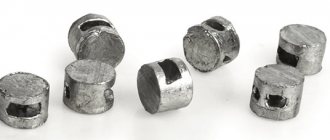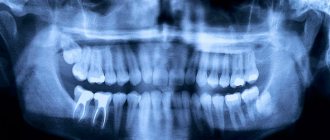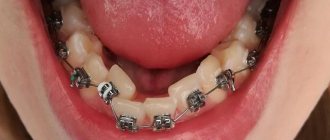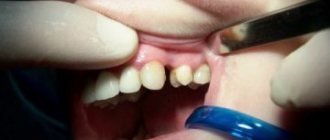Dentists have been using silver amalgam fillings containing mercury for over 150 years. All this time, doctors assured us that these fillings are absolutely safe. Mercury, one of the most toxic metals on the planet, is supposedly “locked” in the material and cannot escape. And, even if this happened, mercury is contained there in the most harmless - elemental (metallic) form.
However, one recent large-scale study found that this is not true - mercury leaks from fillings and can damage the brain, heart, kidneys, lungs and immune system. But the most incredible conclusion of this scientific work is that, once it enters the bloodstream, elemental mercury is converted into methyl mercury, the most toxic form of mercury.
This discovery is quite important. Methyl mercury is ingested primarily through fish, and proponents of silver fillings argue that dental treatment does not increase the total amount of mercury. However, the new discovery means that those with 8 silver amalgam fillings will have 150% more methyl mercury in their blood than those without such fillings. It should be noted that approximately 25% of US residents have 11 or more of these fillings.
Research on amalgam fillings
For a long time this information was hidden. Dental associations in the US and UK have even expelled doctors who hung posters or issued leaflets outside their offices warning that amalgam fillings contain 50% mercury. However, many dentists already began to switch to alternative materials.
Doubts about the safety of amalgam fillings began to grow in the 1980s. It was discovered that mercury vapor evaporating from amalgam fillings settles in the kidneys. Despite this, dentists denied any threat because the evidence was mixed or based on observations with a small number of participants.
A new study from the University of Georgia refutes all objections. Scientists analyzed data compiled from two previously conducted observations (they involved a total of 14,703 people). These were reports from the US National Health and Nutrition Examination Survey (NHANES) that compared the number of fillings people had and the level of mercury in their blood. Other factors that could contribute to increased mercury levels in the body were also taken into account, including environmental influences and eating fish. However, scientists saw a direct relationship between the number of amalgam fillings and the level of methyl mercury in the body. For example, a recent study showed that although the number of fillings did not increase, the level of methyl mercury increased (2011-2012 compared to 2003-2004). Professor Xiaozhong (John) Yu expressed the opinion that these findings are a reason to think that elemental mercury is converted to methyl mercury in the gastrointestinal tract. “As toxicologists, we know that mercury is a poison, but it all depends on the dose. If there is 1 silver filling in your mouth, this is not a big deal. And if the number of such fillings exceeds 8, then the undesirable effect will be much more powerful,” the scientist admits.
Typically, the average American has 3 silver fillings. But this may no longer be safe if a person often eats fish contaminated with mercury or comes into contact with this metal at work.
Question of the day: how to eat kozinaki and protect your teeth?
Harm to health
As mentioned earlier, metal fillings are harmful to health, in some cases even more than they are beneficial. This is due to the presence of mercury in the alloy, which, when entering the body, poisons it, especially if there is more than one such filling in the mouth. The main symptoms of this phenomenon are:
- constant headaches that are practically not eliminated by medications;
- allergic reactions (if they were not there before, they appear; if the patient has suffered from allergies before, they become more aggressive);
- functional and organic disorders in the kidneys.
In addition, it has not yet been determined how metal fillings will behave if they enter the zone of influence of electromagnetic waves, of which there are a lot in a modern room, especially if there are computers and household appliances there.
It is also worth noting that such a filling protects the tooth from damage only during service. When it is removed, the tooth will certainly die, and the nerve will also need to be removed.
Such fillings were widely used in the USSR. People took it for granted and did not in any way associate numerous health problems with the metal filling. However, studies and numerous reviews prove a negative effect on the body.
How do fillings poison our body?
It may also be that mercury is leaking from the filling, and this significantly increases the level of methyl mercury in the blood. This is, for example, the opinion of representatives of the European Commission BIO Intelligence Service (BIS).
A 2012 BIS report found that autopsies found that those who died with amalgam fillings may have mercury levels up to 12 times higher than those without amalgam fillings.
The World Health Organization (WHO) also recognizes that silver amalgam fillings are a significant source of mercury and can leak into the body. The WHO reports that we get 4 times more mercury from fillings than from eating seafood. Judge for yourself: 10 mcg of mercury is absorbed into the body from fillings, only 2.3 mcg from fish, and 0.3 mcg from the environment.
The new study also shows that the process of continuous release of mercury from fillings into the body begins almost instantly - within the same day that the tooth is filled. Thus, the opinion that leakage occurs only from old fillings is refuted. Scientists from the University of Peshawar in Pakistan measured mercury levels in blood, hair, nails and urine samples before and after the filling was installed.
They found that compared to a control group whose teeth were not filled, people with “fresh” fillings had mercury levels that increased eightfold.
As a result of mercury poisoning, the brain, kidneys, and lungs are often damaged. This is indicated by various symptoms - disturbances in vision, hearing, speech and coordination.
How toxic is mercury from fillings?
What harm does mercury cause to health? There are many different aspects related to our lifestyle to indicate a direct cause-and-effect relationship between mercury levels and diseases. However, common sense dictates that ingesting one of the most toxic metals in the world will most definitely cause harm. If the gun smokes, it means someone fired it. We can't see direct evidence, but all the evidence points in the same direction.
As a result of mercury poisoning, the brain, kidneys, and lungs are often damaged. This is indicated by various symptoms - disturbances in vision, hearing, speech, coordination. Mercury also contributes to the development of autoimmune and neurological diseases such as Alzheimer's disease and multiple sclerosis. Professor Boyd Haley of the University of Kentucky has hypothesized that elemental mercury and organic mercury compounds, among other brain toxicants, are the most significant cause of Alzheimer's disease.
In one laboratory experiment, scientists from the University of Calgary in Canada found that when neurons come into contact with mercury ions, their membrane structure is destroyed and their growth is reduced, as well as the proteins in the cell decompose. In addition, neurofibrillary lumps form on cells that come into contact with mercury, and this is one of the signs of Alzheimer's disease.
But that's not all! 6 independent reviews have shown that after the removal of silver fillings, people feel better, the symptoms of chronic diseases rapidly decrease, and in some cases it is even possible to completely get rid of some health problems, for example, chest pain, arrhythmia, disorders of the gastrointestinal tract, multiple sclerosis, migraines, lethargy, apathy, memory problems.
How do bad teeth affect the heart?
There is also indirect evidence about the dangers of this metal, which was obtained from dental clinics. Dental assistants who regularly come into contact with mercury vapor are more likely than other medical personnel to complain of neurological and psychosomatic problems, inability to concentrate, problems with attention, fatigue, and insomnia.
It may never be possible to prove that mercury from silver amalgam fillings causes health problems. However, there is enough evidence to raise the question: why take the risk when there is another, safer alternative?
Flaws
Numerous patient reviews indicate that metal fillings also have negative qualities, of which there are many more, and they are more significant. This opinion is shared by dentists. That is why in many countries they are no longer used at all, and in Russia you will no longer find specialists who will agree to install such a filling, especially in paid clinics.
The main disadvantages are, according to reviews from patients and specialists:
- poor adhesion;
- high thermal conductivity (this can cause toothache when in contact with hot food);
- change in tooth color; in addition, the filling itself is radically different from the color of the enamel (which is why they are most often placed on chewing teeth, the aesthetic appearance of which is of little importance);
- the taste of metal is constantly present in the mouth;
- the difficulty of installing such a filling, as well as a long hardening period, due to which you will need to spend at least two hours with the dentist;
- shrinkage of the material, which may result in tooth chipping, which may require additional intervention;
- The alloy contains mercury, which has a negative effect on the body.
What other consequences could there be?
Amalgam fillings can cause some chronic disease - for example, periodontitis, or gum disease. They have been shown to cause gum problems in at least nine separate studies, says University of Calgary associate professor Murray Vimy.
“Periodontitis is one of the most common chronic diseases, and fillings containing mercury contribute even more to this. The ADA (US Dental Association) and its advisors may be deliberately misleading the public with the help of the press, or they may not have enough information about scientific studies on the leakage of mercury from amalgam fillings, the results of which are published in their own scientific publications,” the professor argues. .
Reviews
Not many people these days have an amalgam filling in their mouth. Dentists prefer to work with more modern materials.
If you have or have had an amalgam filling, share your impressions about it and leave your comment at the bottom of the page.
If you find an error, please select a piece of text and press Ctrl+Enter.
Tags filling fillings
Did you like the article? stay tuned
What do the experts think?
Amalgam fillings have been controversial since the day they were invented (they are a mixture of silver, tin and copper dissolved in elemental mercury).
It was believed that they were more flexible, stronger and cheaper than gold ones, which were previously used to fill holes formed by carious lesions. However, from the very beginning, leading American dentist Chapin Harris refused to work with the new material, describing it as “one of the most dubious products for filling teeth.”
The first American dental association, the American Society of Dental Surgeons, which Harris himself helped found in 1840, disbanded in 1856 over this issue. And, in the end, in 1859 it was replaced by the modern American Dental Association (ADA). Just as many decades ago, today the ADA is favorable towards new material.
Removal and replacement technique
Removing an amalgam filling is not technically difficult. However, from a safety point of view, this operation is more complex than sealing. When drilling a filling, its particles easily enter the oral cavity. In addition, mercury vapor is formed due to the increase in temperature during drilling.
The IAOMT (International Institute of Dentistry and Toxicology) has developed a special protocol that provides special measures to ensure safety when removing amalgam fillings.
However, not all clinics comply with it.
According to this protocol:
- The office must have a special container for collection and further disposal of amalgam particles.
- A filtration and oral suction system must be installed.
- It is advisable to keep windows open when removing amalgam fillings.
- 2 hours before removal, the patient is recommended to take 3-4 g of vitamin C, and immediately before removal - activated charcoal.
- A rubber dam is placed around the tooth with an amalgam filling.
- Instead of drilling out the filling, a cross-shaped incision is made so that it can be removed in pieces. Instead of diamond burs, it is recommended to use steel cutters.
- Some time after removing the filling, it is recommended to carry out chelation - cleansing the body of mercury.
The safest way to remove an amalgam filling is to use the Clean-up system, which is a flexible cap that fits over the tooth in combination with an aspirator that sucks out the broken filling.
Important! It is not advisable to remove an amalgam filling during breastfeeding or pregnancy.
The video presents a specialist’s opinion about amalgam as a filling material.










